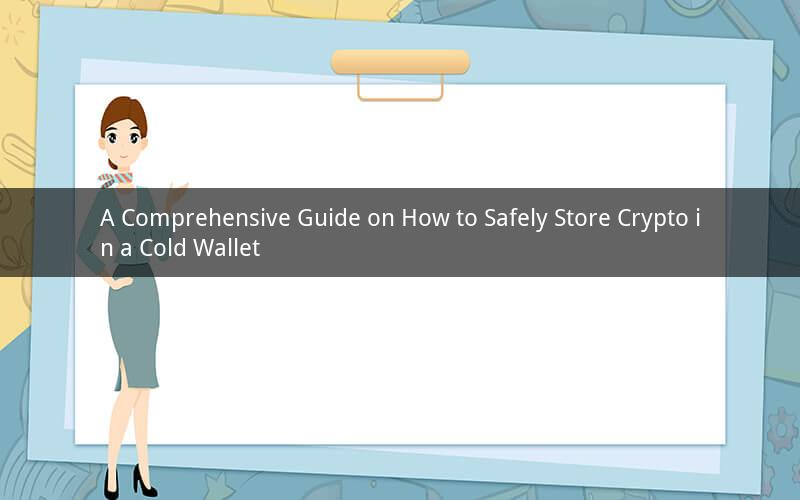
Introduction:
Storing cryptocurrencies securely is a crucial aspect for every crypto enthusiast. One of the most effective ways to safeguard your digital assets is by using a cold wallet. In this article, we will explore the process of how to put crypto on a cold wallet, ensuring your investments remain secure and accessible when needed.
1. Understanding Cold Wallets:
Before we delve into the process of transferring crypto to a cold wallet, it is essential to understand what a cold wallet is. A cold wallet, also known as a hardware wallet, is a physical device designed to store cryptocurrencies offline, thereby reducing the risk of hacking and unauthorized access.
2. Choosing the Right Cold Wallet:
There are various cold wallet options available in the market, each with its unique features and capabilities. To choose the right cold wallet, consider the following factors:
a. Security: Look for a wallet with robust security features, such as multiple layers of encryption and a secure element chip.
b. Compatibility: Ensure the wallet supports the cryptocurrencies you intend to store.
c. User Interface: Opt for a wallet with an intuitive and user-friendly interface.
d. Cost: Compare the prices of different wallets to find one that fits your budget.
3. Setting Up Your Cold Wallet:
Once you have selected a cold wallet, follow these steps to set it up:
a. Unbox the wallet and carefully read the provided instructions.
b. Connect the wallet to your computer using the provided USB cable.
c. Follow the on-screen instructions to install any necessary software or drivers.
d. Create a strong passphrase or PIN to protect your wallet.
e. Write down the recovery phrase and store it in a secure location. This phrase is crucial for recovering your wallet in case of loss or damage.
4. Transferring Crypto to Your Cold Wallet:
To transfer cryptocurrencies to your cold wallet, follow these steps:
a. Log in to your cryptocurrency exchange or wallet where you hold your digital assets.
b. Navigate to the withdrawal section and select the cryptocurrency you wish to transfer.
c. Enter the address of your cold wallet. This address is unique to each wallet and can be found on the wallet's screen or in the software interface.
d. Enter the desired amount of cryptocurrency you want to transfer.
e. Confirm the transaction and wait for the network to process it.
5. Verifying the Transfer:
After the transfer is complete, it is essential to verify that the cryptocurrency has been successfully deposited into your cold wallet. Here's how to do it:
a. Disconnect your cold wallet from the computer.
b. Open the wallet's software or interface.
c. Check the wallet's balance to ensure the transferred amount is visible.
d. Optionally, you can verify the transaction on the blockchain by searching for the transaction ID.
6. Best Practices for Cold Wallet Security:
To maintain the security of your cold wallet, follow these best practices:
a. Keep your recovery phrase confidential and secure.
b. Regularly update the wallet's software to ensure you have the latest security patches.
c. Avoid storing your cold wallet in a location susceptible to theft or damage.
d. Educate yourself on common security threats and scams to protect your assets.
7. Common Questions and Answers:
Q1: Can I use a cold wallet for all cryptocurrencies?
A1: Most cold wallets support a wide range of cryptocurrencies, but it is essential to check the compatibility of your chosen wallet with the specific cryptocurrencies you intend to store.
Q2: How long does it take to transfer crypto to a cold wallet?
A2: The time it takes to transfer crypto to a cold wallet depends on the blockchain network's congestion and the speed of your internet connection. It can range from a few minutes to several hours.
Q3: Can I use a cold wallet for everyday transactions?
A3: Cold wallets are primarily designed for long-term storage and are not ideal for everyday transactions. For daily transactions, it is recommended to use a hot wallet or a mobile wallet.
Q4: What should I do if I lose my cold wallet?
A4: If you lose your cold wallet, you can recover your cryptocurrencies using the recovery phrase. However, it is crucial to keep your recovery phrase secure and accessible.
Q5: Are cold wallets 100% secure?
A5: While cold wallets offer a high level of security, no storage method is entirely foolproof. It is essential to follow best practices and stay vigilant against potential threats to ensure the safety of your digital assets.
Conclusion:
Storing your cryptocurrencies in a cold wallet is an effective way to protect your investments from online threats. By following the steps outlined in this guide, you can safely transfer your crypto to a cold wallet and enjoy peace of mind knowing your assets are secure. Remember to choose the right cold wallet, set it up correctly, and adhere to best practices for maintaining its security.